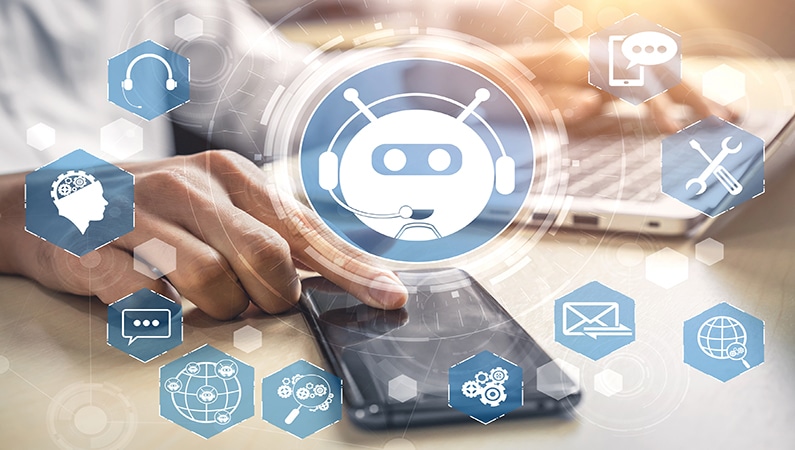
Digital conversations and messaging drive exceptional customer experience for business buyers and individual consumers. There are several trends in live chat in 2021 that will impact the messaging industry. All-in-one communications platforms, AI/ML bots, and the drive towards integrated solutions, all affect live chat messaging performance and the ability to deliver exceptional customer experience.
Companies that leverage technology to provide an exceptional customer experience realize an increase in revenue of 22% and 1.9x higher year-over-year customer retention. As functional engineers continue to innovate, delivered digital conversations can be affected by the types of systems that companies choose. Let’s dive into why to tackle the trends in live chat in 2021, it is imperative that growing brands target dedicated function over form.
The problem with all-in-one and “chat as a function of” platforms
One trend in live chat in 2021 is all-in-one bundles and systems that offer chat principally as a side feature. This trend is set to impact the digital communication industry. All-in-one communication platforms are massive business process systems that, in addition to myriad primary business functions, attempt to manage any communication you might have with a customer such as voice, email, SMS, chat, Facebook, Twitter, and more.
While many systems claim to be all-in-one systems, true all-in-one platforms are relatively few and far between. They are often massive cloud-based ERP (Enterprise Resource Planning) platforms made up of several integrated modules.
ERP systems are employed to manage all business functions from SCM (Supply Chain Management) to payroll. It is typical for enterprise-size organizations to adopt ERP systems to manage operations, including: project planning, product launch, and price configurations.
The ERP concept is to unify business functions on a single platform in order to reduce costs. For SMBs seeking phenomenal customer communication systems, ERP systems are often much more than they need or want.
Communication breakdown when chat is not the primary offering
Chat as a “function of” platforms focus on a target spectrum of communications based on a particular business aim. For example, Hubspot focuses on “top of the funnel” sales and marketing, Zendesk focuses on service and support, and Intercom focuses on SaaS apps.
As small and medium businesses grow, but before they reach enterprise level, it’s common for them to consolidate customer communications around one or more critical business functions — such as marketing, sales, or service. Chat almost always comes included with these functions. As companies grow to a larger mid-market, they can accumulate multiple systems that include a chat feature, which causes problems over time.
Brands that emphasize providing a consistent, universal, and omnichannel customer experience — but are using multiple systems — often run into increased communication barriers as consistency breaks down across platforms.
Chat support features follow primary functions
As both all-in-one and “function of” systems don’t feature chat as their primary offering, they also tend to have severely limited chat support. This weakness opens the door for dedicated chat platforms that offer robust unified chat systems which seamlessly integrate with underlying platforms.
SnapEngage has one primary function — to provide an outstanding chat solution. We invest in our product’s future, perform regular reviews and incorporate customer feedback, and keep our finger on the pulse of industry innovation. Our live chat specialists educate and empower your teams by providing the targeted knowledge and support they need.
AI and machine learning bots are increasingly more versatile
Advancement of artificial intelligence and machine learning in bots is another major factor that will impact the live chat market. Though bots have been around for quite some time, only recently have their full impact been felt in the live chat market.
Advances in AI and machine learning make bots increasingly more powerful and versatile. They are able to absorb a considerable percentage of simple questions to augment support teams and liberate human labor hours.
Because of the rapid advancement of AI in recent years, it’s not unthinkable that AI/ML-powered bots will eventually be able to resolve over 90% of common issues without the need for human live chat.
Though AI/ML bots are still expensive and complicated to employ, increased adoption in the future will usher in lower costs and a flattened learning curve. AI/ML-powered bots may even be offered as a plug-and-play service. Medium and large companies alike will see the cost savings of trading 100 support agents for a $200,000 super bot to cut overhead.
The future trends of bots
AI/ML-powered bots will be integrated with all back-end systems and offer state-of-the-art customer experience enhancement. For instance, bots will be able to respond to customer behavior analytics for customer retention. If a customer is unhappy, bots might offer and apply a discount, issue a refund, cancel a service, or process a return — all without the assistance of a human agent. This type of service far exceeds the capabilities of today’s basic “FAQ bots.”
SnapEngage believes bots are here to stay — both consumers and enterprises have come to depend on them. Intelligent chatbots increase customer engagement. Increased customer engagement drives revenue. As a fully-featured bot platform, SnapEngage has doubled down on our chatbot investment strategy by successfully launching our bot suite in the summer of 2020.
Now, we are invested in the next generation of GuideBot, AnswerBot, and Chatbot integrations and have partnered with companies such as GetJenny, Cresta, and XSell technologies for the deep AI/ML capabilities. SnapEngage also offers customized bot onboarding services to fit any organization’s business goals, and we specialize in catering to your team’s specific needs.
The rise of integrations and APIs
Another trend in live chat in 2021 that impacts all digital communications (and all cloud computing) is the rise of integrations and APIs. Integrations allow the specialization of “best of breed” systems — those systems considered masters of their respective niche — to manage targeted functions. Novel advancements in APIs (application programming interfaces), made by functional systems engineers, continue to improve universal connectivity and secure data sharing.
Medium-to-larger enterprises that seek peak performance and business agility frequently select “best of breed” systems to perform a specific function. However, only if those systems have robust, flexible integrations to their other systems.
Large mid-sized companies, with a critical dependence on powerful APIs, usually have budgets for technical teams to build what they need when they need it. While this represents an ongoing investment rather than an out-of-the-box solution, it allows potential for companies to scale.
However, custom API work is often seen more as a “gap filler” rather than the primary method of interconnecting systems. Even for large companies, the majority of integration points must work out-of-the-box, and then gaps can be mended with customer API work. In this manner, customized API is an enhancement rather than a system itself.
Integration and API strategies are pivotal to the SnapEngage roadmap as an extension of the SnapEngage product promise to deliver scale, experience, and insights. Clients such as Dropbox are already investing in our API roadmap, precisely because we offer a highly customizable platform.
Relevant systems will adapt to trends in live chat in 2021
SnapEngage is the premier conversation platform for exceptional customer engagement. As functional engineers continue to master cross-connectivity complexities in the future, SnapEngage is fully positioned to meet and exceed innovative challenges and trends that will affect live chat and digital messaging over the coming years.
SnapEngage offers the agility to evolve and create new business opportunities within systems of all kinds, whether challenges come from the twin forces of all-in-one customer communication platforms and AI/ML bots, or the ongoing necessity of integrated solutions and API customization.
By integrating with Hubspot, Zendesk, Salesforce, and more than 100 third-party platforms, SnapEngage chat solutions provide all enterprises the agility to customize. In response to trends in live chat in 2021, SnapEngage continues to craft and offer best-in-class live chat and digital messaging with finesse.



